The early days
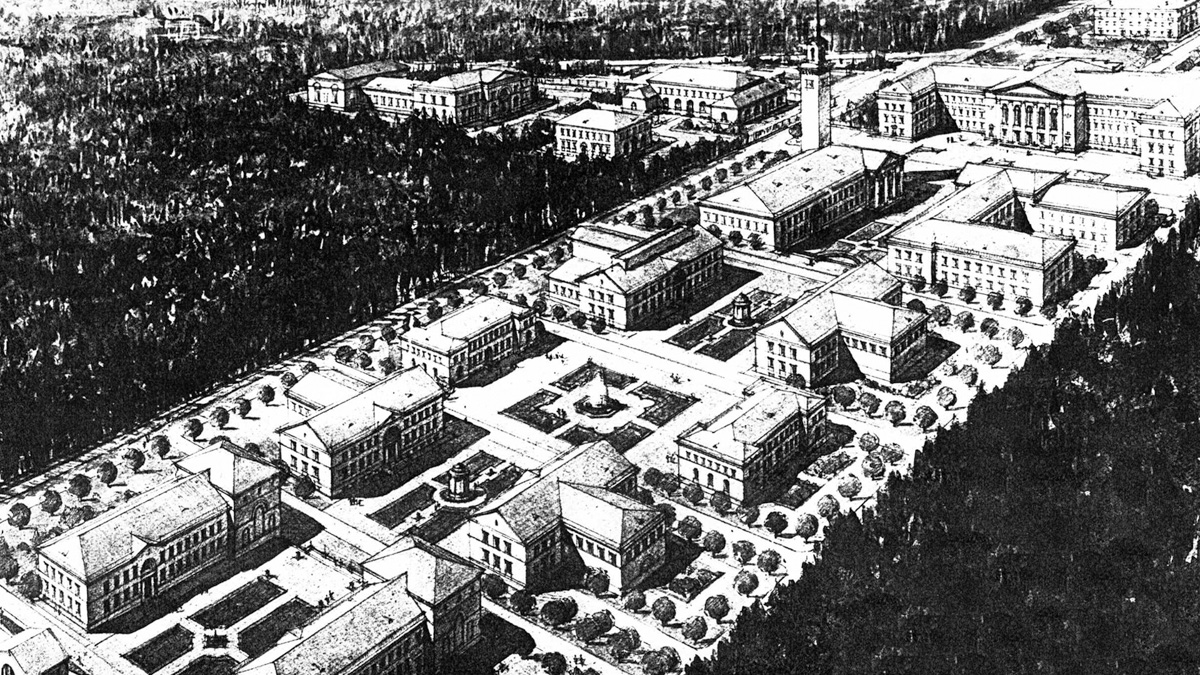
February 18, 1955, is considered the official date of the establishment of VNIIFTRI, which was formed by combining the Central Scientific Research Bureau of the United Time Service, the Central Scientific Research Institute of Radio Measurements and the Central Scientific Research Institute of Physico-Technical Measurements.
But its history began as early as 1938, when the Council of People’s Commissars issued a decree on overhauling the measurement infrastructure in the USSR and established the Committee on Measures and Measuring Instruments. The Committee drew up the project specification for a new scientific research institute to be constructed in Moscow. A special commission was set up at the USSR Academy of Sciences, which was charged with the task of specifying the specialization and functions of the future institute.
The project was postponed due to the World War II. After the war, in 1946, the Council of Ministers instructed the Committee on Measures and Measuring Instruments to begin the construction of the Central Scientific Research Institute of Physico-Technical Measurements (CNIIFTI), which later became the All-Union and then the All-Russian Scientific Research Institute of Physico-Technical and Radio Technical Measurements.
The founding of the institute — to which prominent scientists such as Nobel Prize winner, academician Pyotr Kapitsa and academicians Evgeniy Chudakov and Aleksandr Baikov had contributed — was motivated by the need for metrological service for then rapidly developing new technologies, which used processes running under conditions such as low temperatures, extreme pressures, high vacuums, ultrahigh speeds, and complex exposure of materials to electric and magnetic fields, where requirements for measurement accuracy are especially strict.
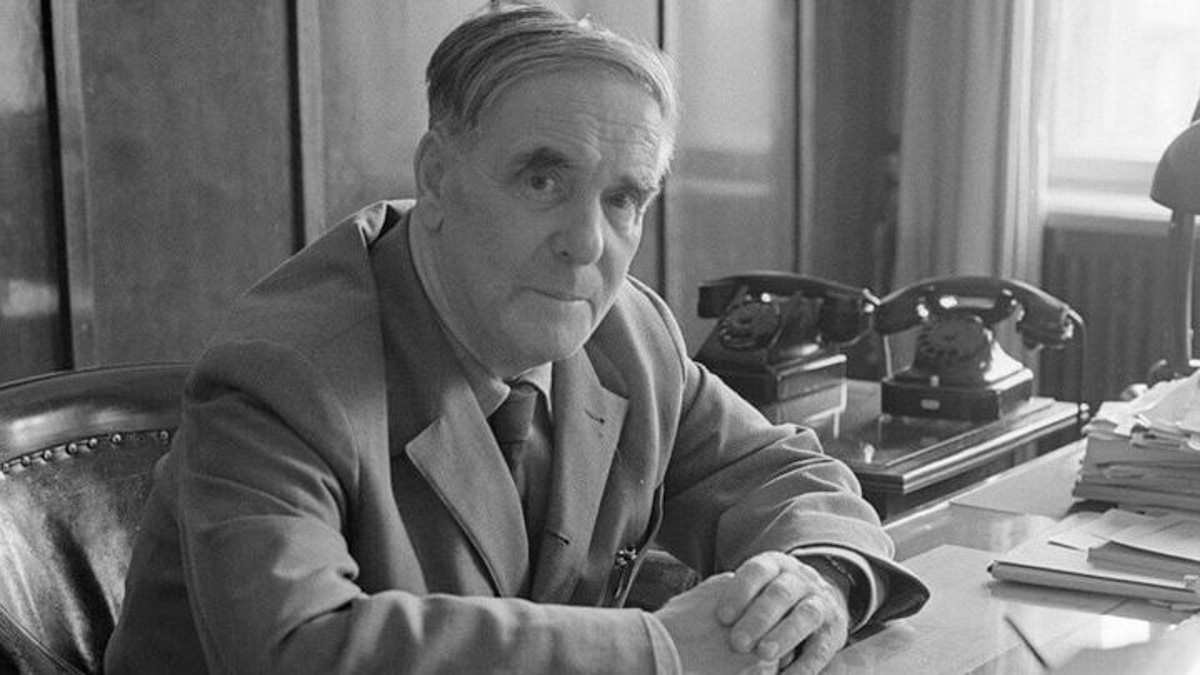
1950s:
Formation of the Institute
In 1955, low temperature laboratories were transferred to VNIIFTRI from the All-Union Scientific Research Institute of the Committee on Measures and Measuring Instruments. Today, VNIIFTRI is one of the few scientific institutes in the world where fundamental research in low temperature metrology has been pursued for decades.
Also since the mid-1950s, work has been actively carried out in acoustics and underwater acoustics. Two research and production facilities for acoustic and hydroacoustic measurements, an anechoic room and a reverberation room were designed and built; and an acoustic interferometer and other instruments were developed.
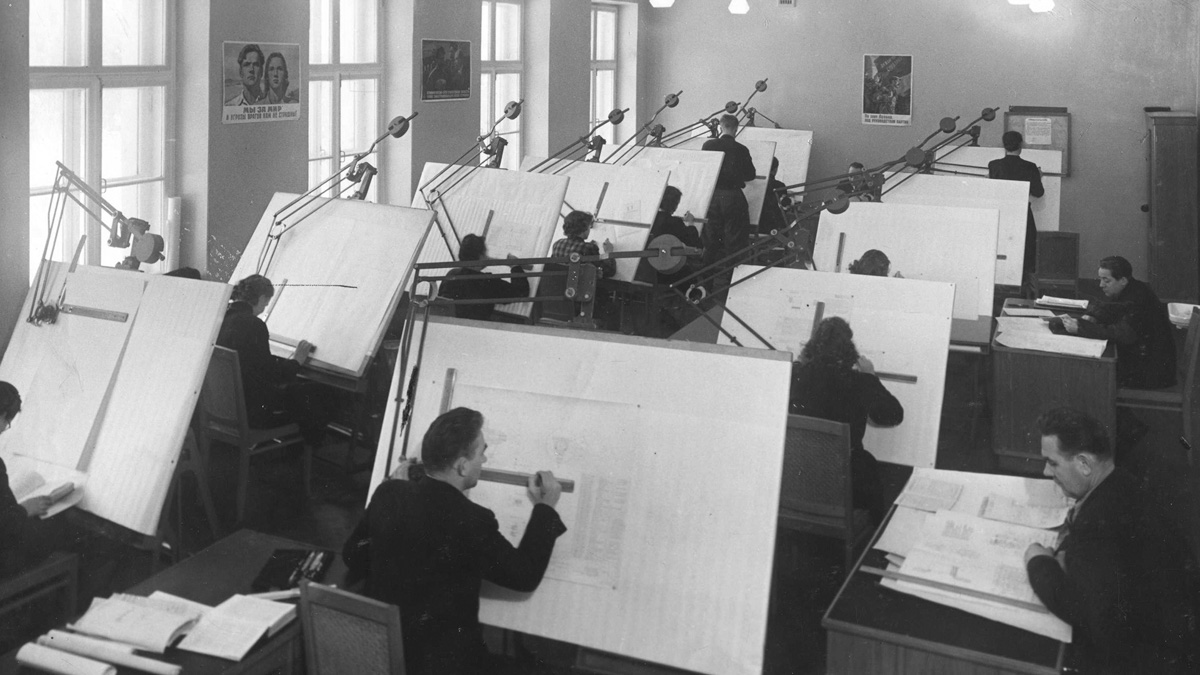
Radio measurements were advanced at VNIIFTRI, leading to the development of facilities for the verification of frequency measuring equipment; instruments to measure radio interference, high-frequency current and dielectric properties.
The 1950s marked the end of the first stage in the development of VNIIFTRI, during which the groundwork was laid for future research, first directions of work were identified, and the main parts of its material and technical basis were created.
The Service for Time, Frequency and Earth Rotation Parameters
Time and frequency measurement has become the main area of scientific work at VNIIFTRI, with scientists Sergey Pushkin, Boris Vlasov, Vladimir Titov and Viktor Tatarenkov being among those who laid the foundations for it. VNIIFTRI is home to the Main Metrological Center for the State Service for Time, Frequency and Earth Rotation Parameters.
On October 4, 1957, when the first Soviet artificial Earth satellite was launched, the VNIIFTRI time service began broadcasting «six-pip» precise time signals and transmitting through special radio stations second, minute and five-minute signals intended for artificial earth satellite observation stations.
Since January 1, 1960, the institute has been broadcasting precise time signals around the clock, and in 1962 regular work on the determination of Earth rotation parameters commenced.
In 1964, VNIIFTRI began work on the development of equipment complexes for a state standard to reproduce and transfer the atomic second and the atomic time scale. In 1967, it was officially approved by Gosstandart as the State Primary Standard for Time, Frequency and Atomic Time Scale and assigned the number one. It was based on quantum-mechanical hydrogen oscillators and a group of precision quartz clocks as time scale keepers.
The state standard for time and frequency ensured the reproduction of the units of measurement with an error of 1·10-11.
The vast amount of work on the testing and certification of equipment introduced into the standard, and the drawing up of the standard’s operation and maintenance procedures, and normative and methodological documents was carried out under the direction of the chief designer of the state standard for time and frequency Sergey Pushkin (the great-great grandson of Russian poet Alexander Pushkin).
On January 1, 1972, signals from the radio stations of the USSR State Service for Time and Frequency were agreed with the international time scale, with an error of less than 50 ms.
In 1994, VNIIFTRI became the Main Metrological Center for the State Service for Time, Frequency and Earth Rotation Parameters (GMTs GSVCh).
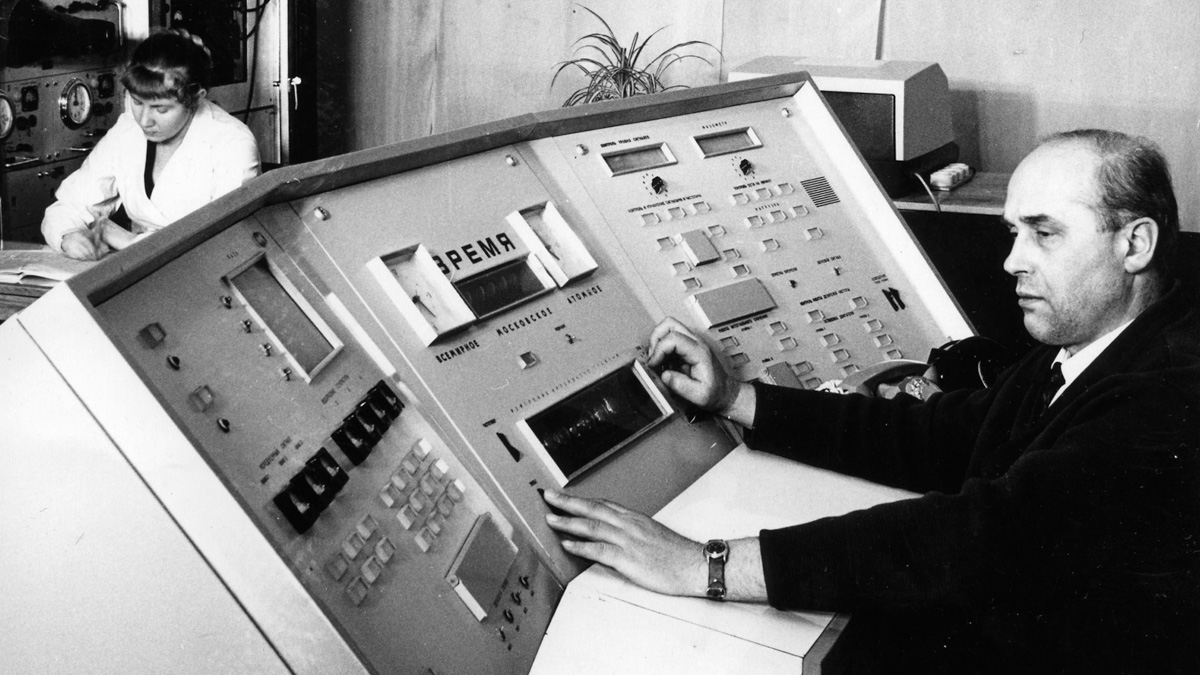
The 1960s:
Development of measurement standards
The 1960s were a period of rapid development for the institute, when its staff considerably increased. First important scientific results were achieved. The first stage in the development of reference measuring instruments for radio-technical quantities was completed.
In the early 1960s, an initial program for the development of reference facilities to measure acoustical quantities was completed.
In 1961, a pilot production facility to manufacture products intended for scientific purposes was put into operation.
In the mid-1960s, the VNIIFTRI radio measurement department elaborated a philosophy for the development of measurement standards in the field.
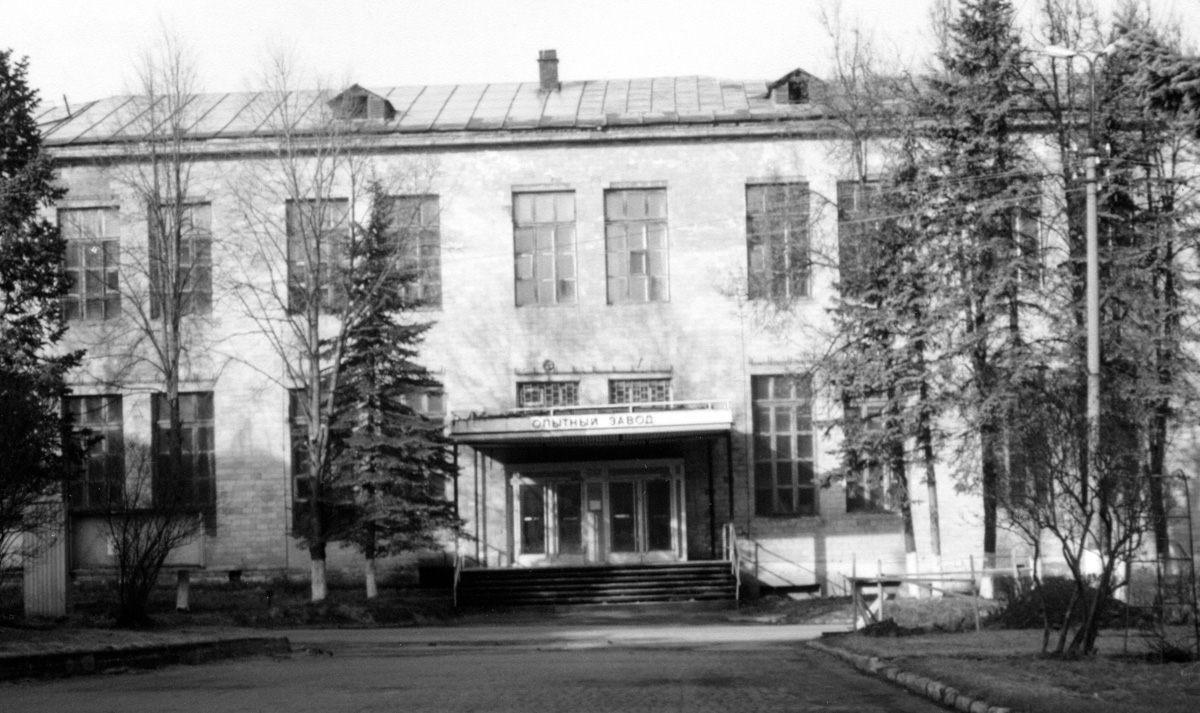
The late 1960s saw the emergence of new areas of activity such as the study of the physico-mechanical properties of materials, aerodynamic measurements, metrology in construction, and acousto-optics; new departments for the measurement of laser parameters and biomedical measurements were created.
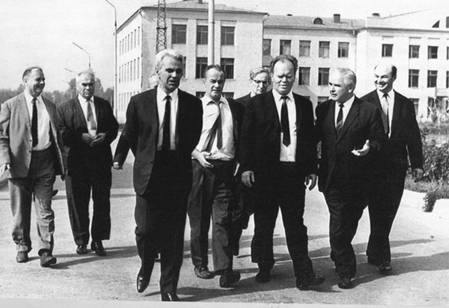
The 1970s
In the 1971, the state primary standard for the unit of the power spectral density of RF noise was approved — the first in a series of state standards that were created in keeping with a newly devised, refined concept for the development of standards for base units in the high-frequency and microwave ranges.
In 1974, the state standard for the unit of sound pressure in water was developed.
In 1975, a qualitatively new equipment complex of the state standard for time and frequency was approved. It was rated among the best standards in the world.
The 1980s:
The era of quantum metrology
In the early 1980s, work in the field of quantum metrology began. An equipment complex based on the Josephson effect for the reproduction, storing and transfer of the volt was created. For the first time in Russia, a round-robin comparison of Josephson standards was carried out using a precision, stable transfer voltage standard developed at VNIIFTRI.
Work on obtaining the values of atomic and ionic constants was fruitfully pursued. In cooperation with a number of foreign laboratories, the largest automated data bank on atomic constants in the world was created.
VNIIFTRI was also successful in the manufacture of precision measuring equipment.
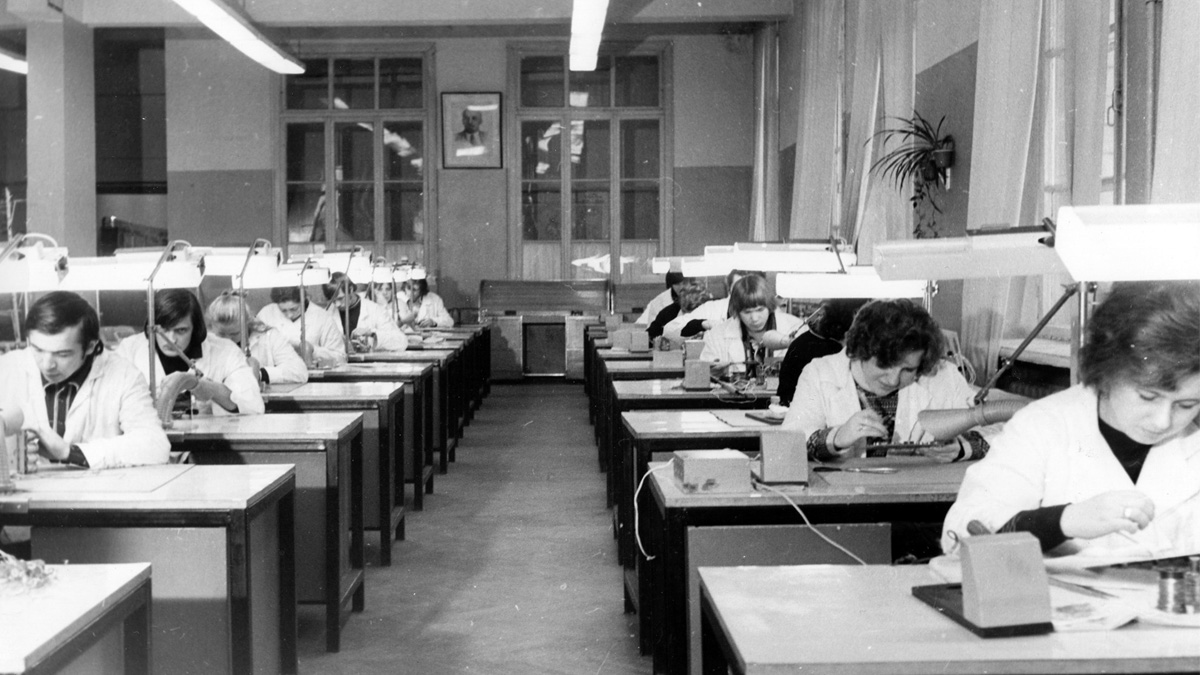
The 1990s
The 1990s were an important period that posed new challenges for the institute. After the collapse of the USSR, some of Russia’s standards ended up located outside of its territory. VNIIFTRI was charged with the task of restoring lost standards. The institute reproduced a group of standards of various levels that ensured measurement of electromagnetic oscillation; the state primary standard of the pH scale; the state primary standard for the electrical conductivity of liquids, and others. Owing to this work on developing new measurement standards and improving their characteristics compared to the lost ones, VNIIFTRI became and continues to be, by keeping improving its standards, one of the leaders in accuracy.
In 1994, VNIIFTRI achieved the status of a State Scientific Center and has maintained it to the present day.
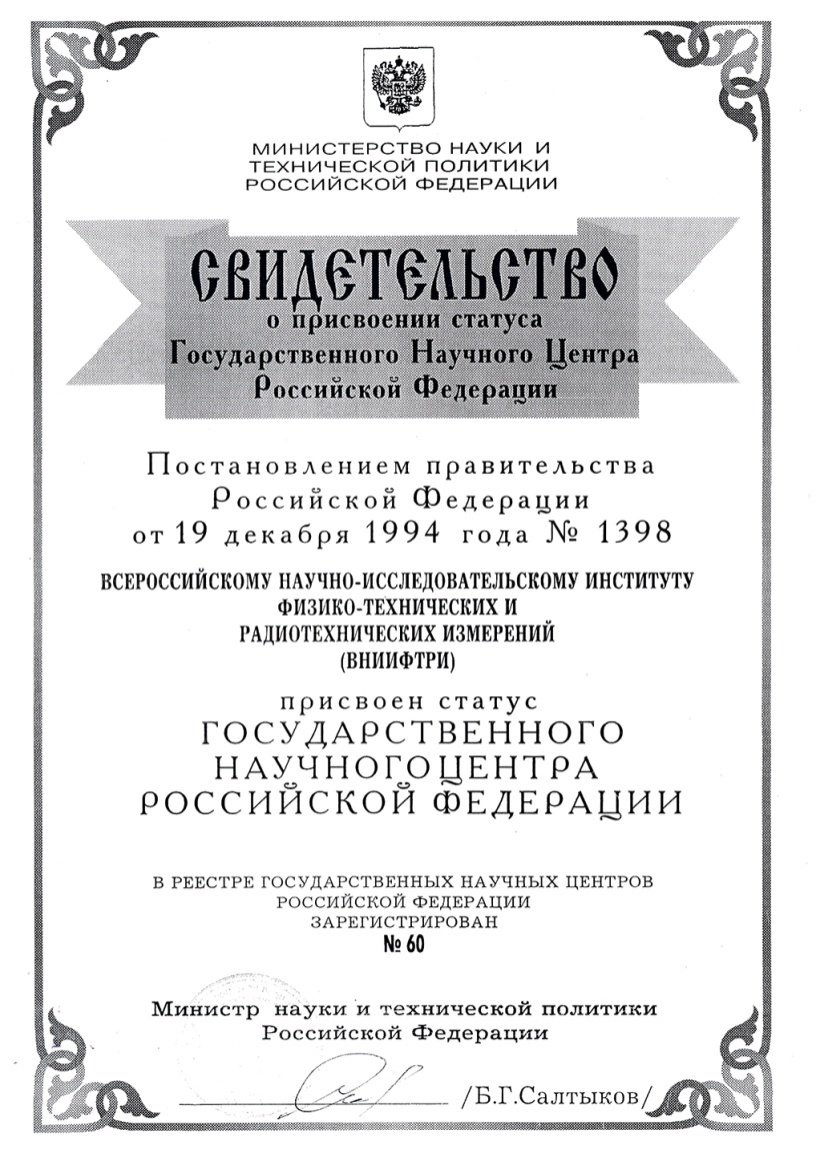
The 2000s:
VNIIFTRI is a State Scientific Center of the Russian Federation
Today VNIIFTRI is a State Scientific Center and keeps the status of the Main Metrological Center of the State Service for Time and Frequency. The institute has been recognized to be among the leading Russian metrological institutes subordinated to Rosstandart. Following the results of an evaluation of scientific institutions carrying out non-military scientific research, experimental design and technological work, conducted by the agency in 2019, VNIIFTRI was awarded I (the highest) category status.
The institute participates in the implementation of a number of priority areas of the development of science and technology and critical technologies; and in the maintaining of the Federal Information Fund for Ensuring the Uniformity of Measurements. It performs the functions of the head organization responsible for maintaining and developing metrological support for GLONASS.
Every year, at metrology events, VNIIFTRI presents its newest developments in such areas as physico-chemical and electric measurements, metrological support for coordinate-time and navigation systems, acousto-optics and laser opto-electronics, etc.
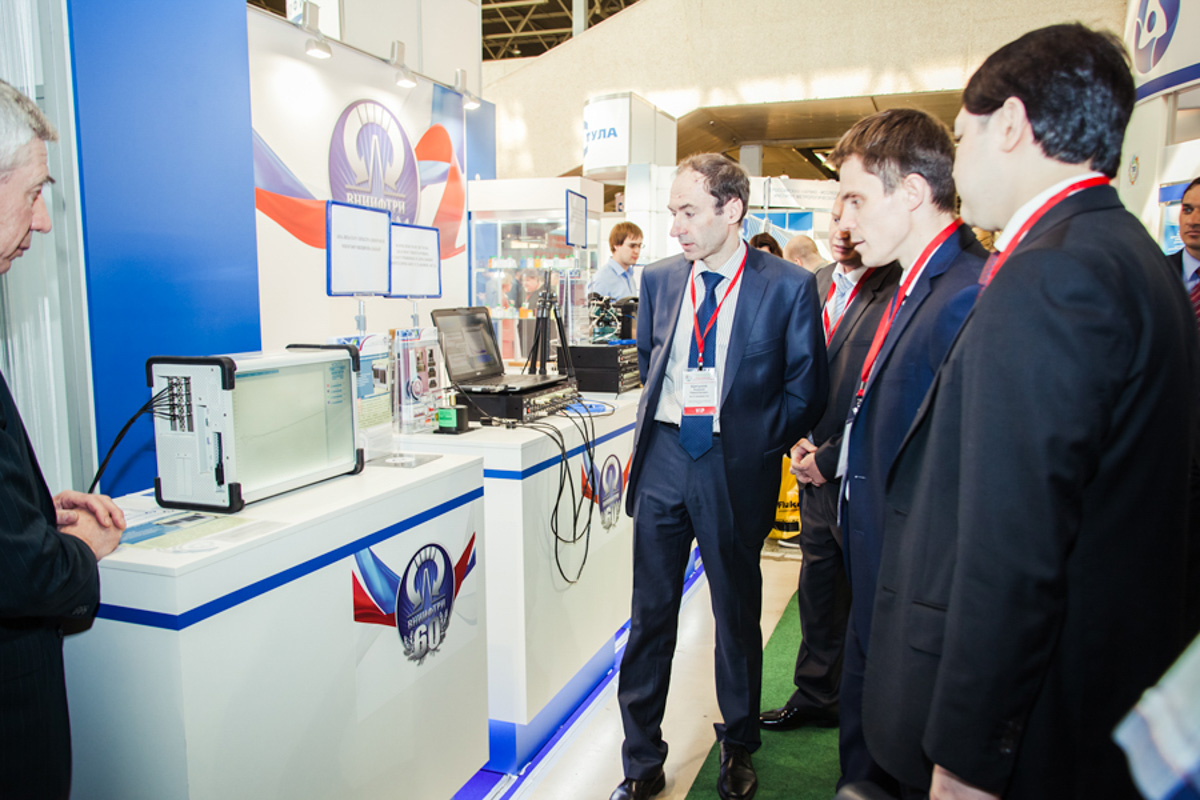
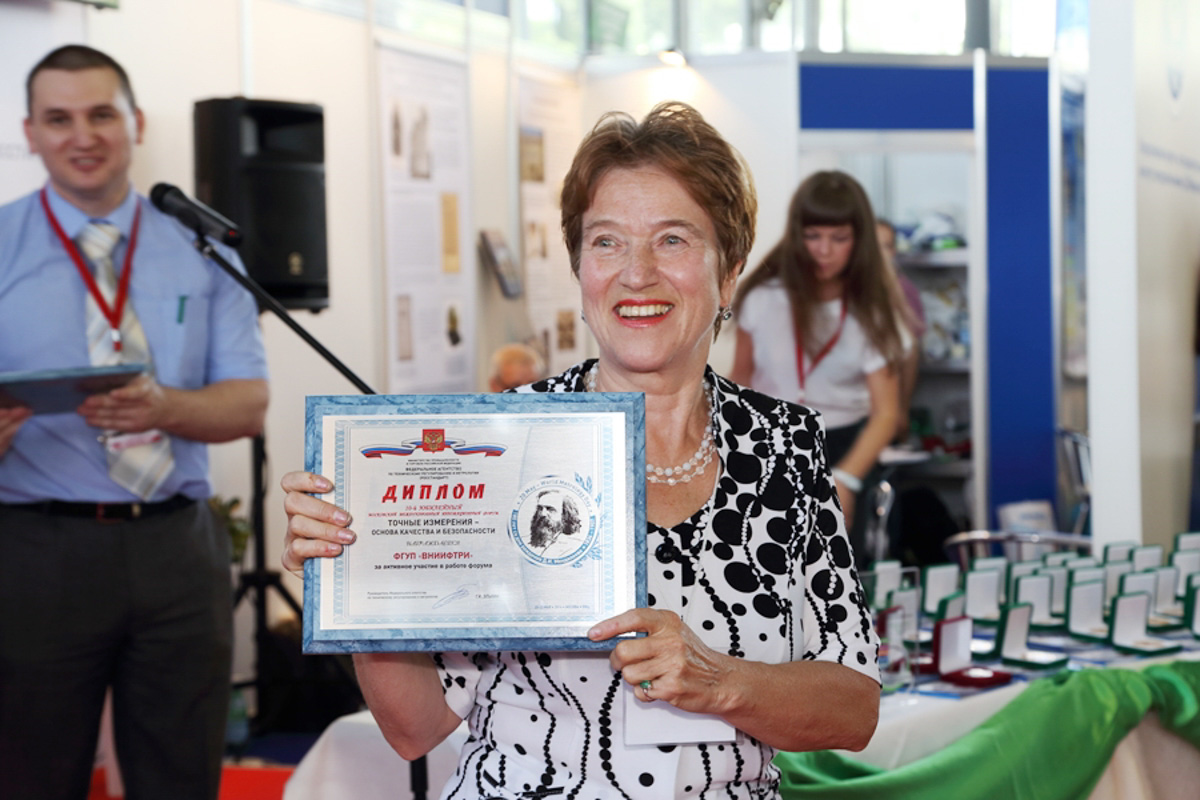
In 2018, an acoustic gas thermometer designed for precision determination of thermodynamic temperature from the speed of sound in gaseous helium was developed at VNIIFTRI. When introduced into the current temperature standard, this equipment complex will make it possible to determine the unit of temperature, the kelvin, on the basis of the Boltzmann constant. Owing to the newly created thermometer, VNIIFTRI is participating in the development of a new International Temperature Scale. Currently only the U.S., France, Great Britain and Italy have similar equipment.
In 2018, the State Primary Standard for Time, Frequency and the National Time Scale was upgraded by the introduction of new devices developed at VNIIFTRI, including a precision optical clock with laser cooling of atoms. The optical clock is based on cold strontium atoms and has an error of one second in several billion years. This modernization has made VNIIFTRI one of the best laboratories in the world in this field.

In 2019, VNIIFTRI specialists presented their new development — an ultra-miniature rubidium quantum frequency standard. Unique in Russia, this equipment will help to take the technologies of navigation systems, 5G networks, and safe unmanned vehicles to a new precision level. An ultra-miniature standard is indispensable in the synchronization of equipment and data transmission in high-speed computer networks, which is especially important for financial transactions in the banking sphere and for telecommunication systems. Owing to its small size, the device is capable of being integrated into precision measuring instruments (spectrum analyzers, network analyzers, oscilloscopes, etc.), significantly increasing their functionality and accuracy.
Together with the development of metrological support for satellite navigation systems, VNIIFTRI began research in the field of gravimetry and the measurement of the Earth’s gravitational field. New developments will help to create complex positioning systems, including ones that use gravity navigation. The main advantage of the new positioning systems is their capability of continuous determination of position, irrespective of external conditions and GNSS signal state. In particular, this will enhance the possibilities for the study of the Earth and its gravitational field, which will allow early determination and forecasting of seismic activity, prediction of volcanic eruptions, and observation of the change in the Earth’s ice cover and the world ocean level.
February 18, 2020 marked 65 years of VNIIFTRI. Over this time, the institute has achieved significant results in the effective and efficient use of its innovation, and scientific and technological potential. Today, VNIIFTRI continues to successfully meet the objectives set by the state and to make major contributions to the development of science and technology in Russia and in the world.
Спасибо! Заказ успешно отправлен.